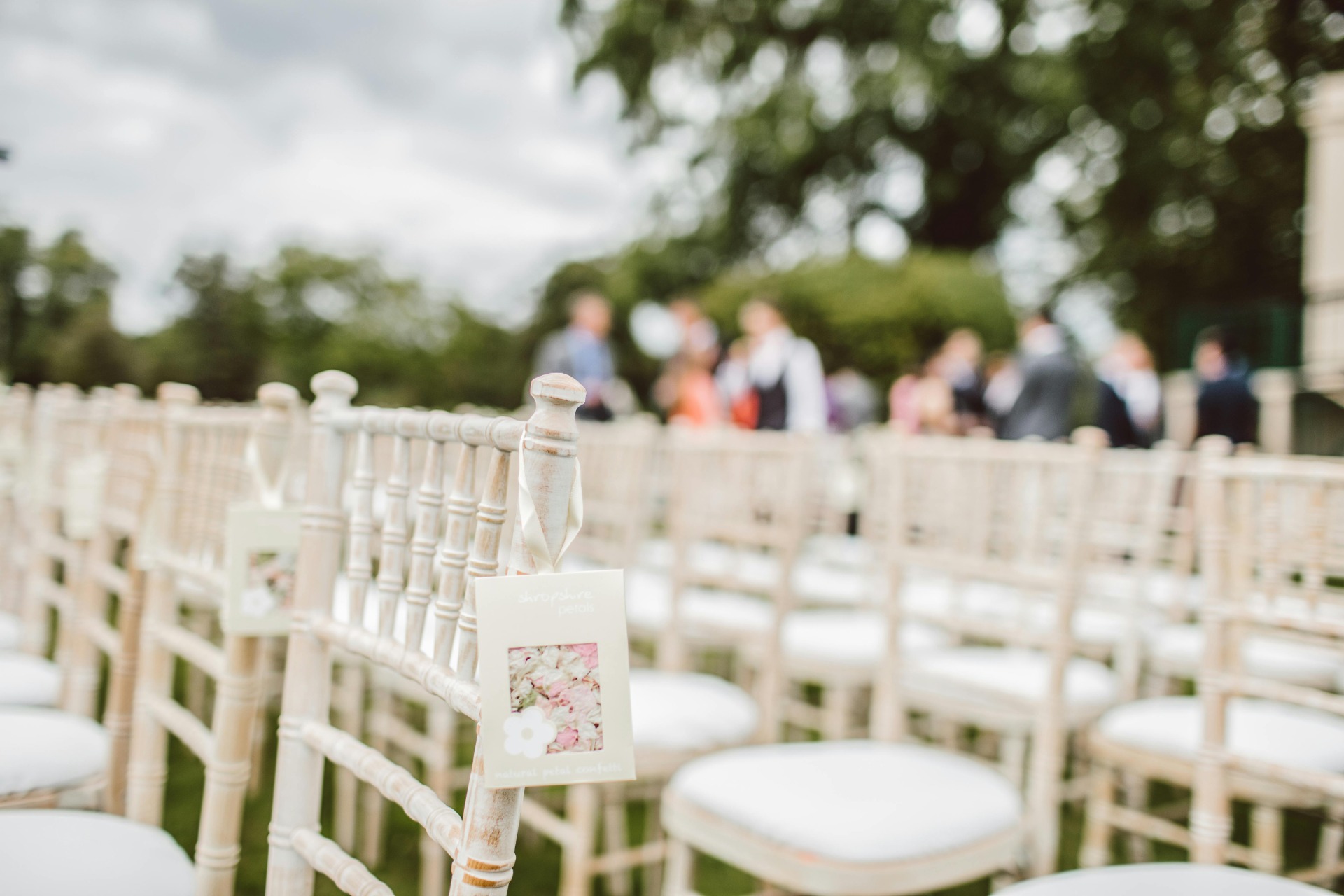Who Goes Where at a Wedding? Easy Wedding Etiquette Guide for Ceremony & Reception
16/07/2025

Planning your wedding and don't know where to start with things like:
Who walks in first? Where do I sit? Which hand does the ring go on?
I totally get you.
So here's a super clear, no-drama guide to help you feel in control.
No stiff rules—just helpful references so you can choose what fits you best 💖
📍 Where does everyone sit during the ceremony?
Where do the bride and groom stand?
- Traditionally, the bride stands on the left (facing the altar), and the groom on the right.
- But if you're two brides or two grooms: do whatever feels right. The most important thing is that you're comfortable.
Who enters first?
- The groom usually arrives early, around 30–40 minutes before the ceremony, and enters with his mother or godmother.
- The bride enters last, after everyone else.
- If there are bridesmaids, flower girls or page boys, they walk in just before the bride.
Where do the parents or godparents sit?
- They sit in the front row, always.
- Traditionally: the groom's mother on the left, the bride's father on the right.
- If you have two moms, two dads, or a different family structure—no problem. Just make sure they have a meaningful spot.
💍 Which hand does the ring go on?
This varies depending on the country (and lots of people don't realize it!):
- In Spain and some European countries, the engagement ring goes on the left, and the wedding band on the right.
- In the U.S., UK and many others, both rings go on the left hand.
- Our advice: do what feels right or looks best to you. There's no single "correct" way.
👗 What about bridesmaids?
- They walk in before the bride and stand near the altar or sit in the front row.
- If you have several, walking in in pairs looks elegant and symmetrical.
- They don't have to dress exactly the same, but a coordinating element (like color, smaller bouquet or accessory) is a nice touch.
🍽️ Reception Seating: Who Sits Where?
The couple's table
- You can sit with your parents and godparents (traditional style) or just the two of you (more intimate).
- If using a round table, make sure you face the guests.
- If you're using a long table, place yourselves in the center so everyone can see you.
The rest of the guests
- Group guests by relationship or vibe: family with family, friends with friends.
- Older guests: keep them far from the speakers or DJ.
- Kids: they can sit together at a kids' table—but close enough to their parents.
🧐 Small details no one tells you (but really matter)
- Don't leave the bouquet on the altar. Place it on a bench or hand it to someone you trust.
- For vows or speeches, keep it short: 2–3 max, and make them heartfelt.
- At civil ceremonies, you can break all the rules: walk in together, use different music, keep it casual. Totally your call.
💡 Bonus: What if parents are divorced or families are complicated?
- Let each parent walk in separately, or be accompanied by someone they're close with.
- At the reception, if they're not on good terms, seat them apart with their own side of the family or friends.
- The goal: protect your peace and make sure everyone feels included without forcing awkward situations.
🎯 Final Thoughts
Wedding protocol is here to help, not to stress you out.
Knowing the "rules" gives you a base, but the real magic happens when
you make them yours.
Do it your way.
There's no one "right" way to get married—only the way that makes you both happy 💛
